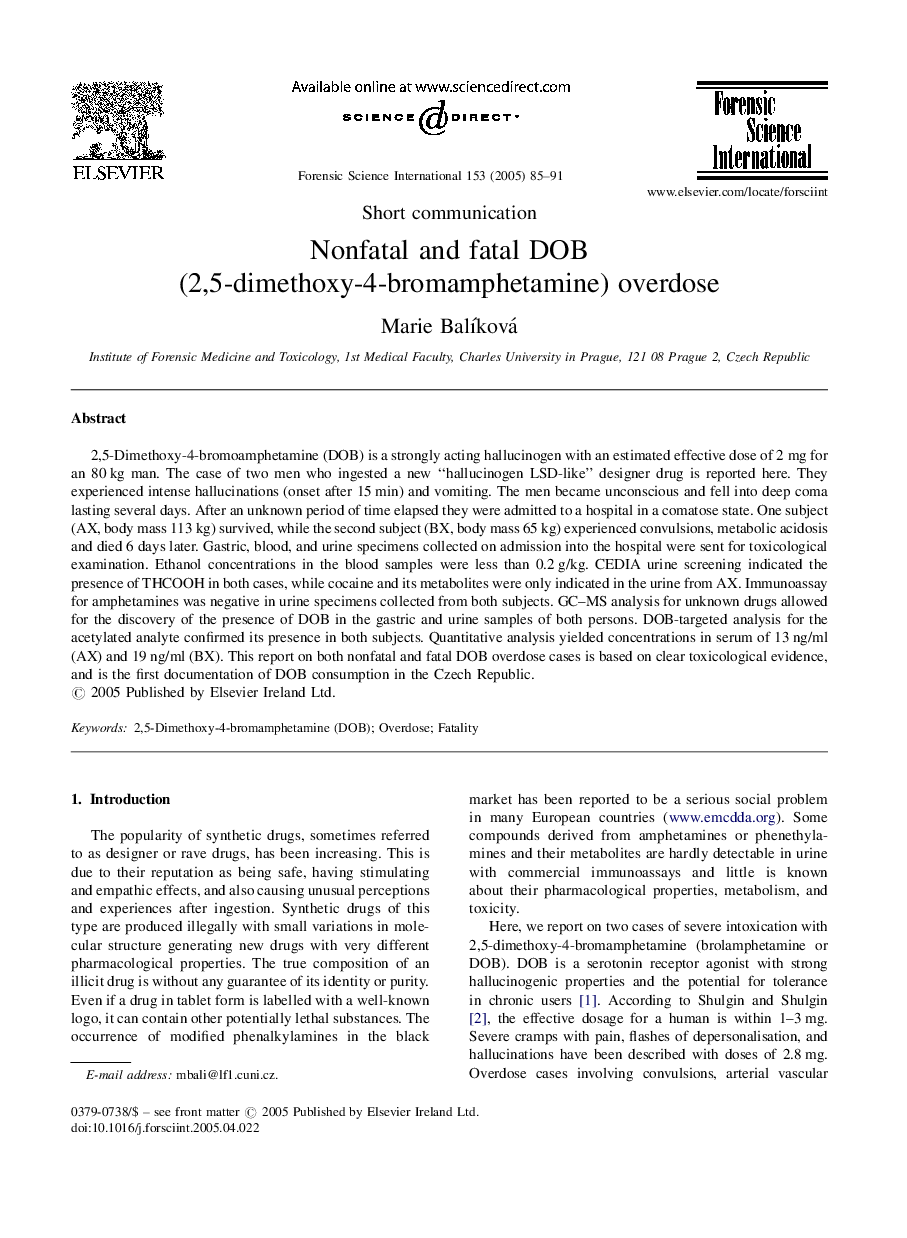| Article ID | Journal | Published Year | Pages | File Type |
|---|---|---|---|---|
| 10252718 | Forensic Science International | 2005 | 7 Pages |
Abstract
2,5-Dimethoxy-4-bromoamphetamine (DOB) is a strongly acting hallucinogen with an estimated effective dose of 2Â mg for an 80Â kg man. The case of two men who ingested a new “hallucinogen LSD-like” designer drug is reported here. They experienced intense hallucinations (onset after 15Â min) and vomiting. The men became unconscious and fell into deep coma lasting several days. After an unknown period of time elapsed they were admitted to a hospital in a comatose state. One subject (AX, body mass 113Â kg) survived, while the second subject (BX, body mass 65Â kg) experienced convulsions, metabolic acidosis and died 6 days later. Gastric, blood, and urine specimens collected on admission into the hospital were sent for toxicological examination. Ethanol concentrations in the blood samples were less than 0.2Â g/kg. CEDIA urine screening indicated the presence of THCOOH in both cases, while cocaine and its metabolites were only indicated in the urine from AX. Immunoassay for amphetamines was negative in urine specimens collected from both subjects. GC-MS analysis for unknown drugs allowed for the discovery of the presence of DOB in the gastric and urine samples of both persons. DOB-targeted analysis for the acetylated analyte confirmed its presence in both subjects. Quantitative analysis yielded concentrations in serum of 13Â ng/ml (AX) and 19Â ng/ml (BX). This report on both nonfatal and fatal DOB overdose cases is based on clear toxicological evidence, and is the first documentation of DOB consumption in the Czech Republic.
Related Topics
Physical Sciences and Engineering
Chemistry
Analytical Chemistry
Authors
Marie BalÃková,
